Gentle, naturally pink, and sugar-free—this homemade beni shoga (pickled ginger) uses only young ginger and ume vinegar.
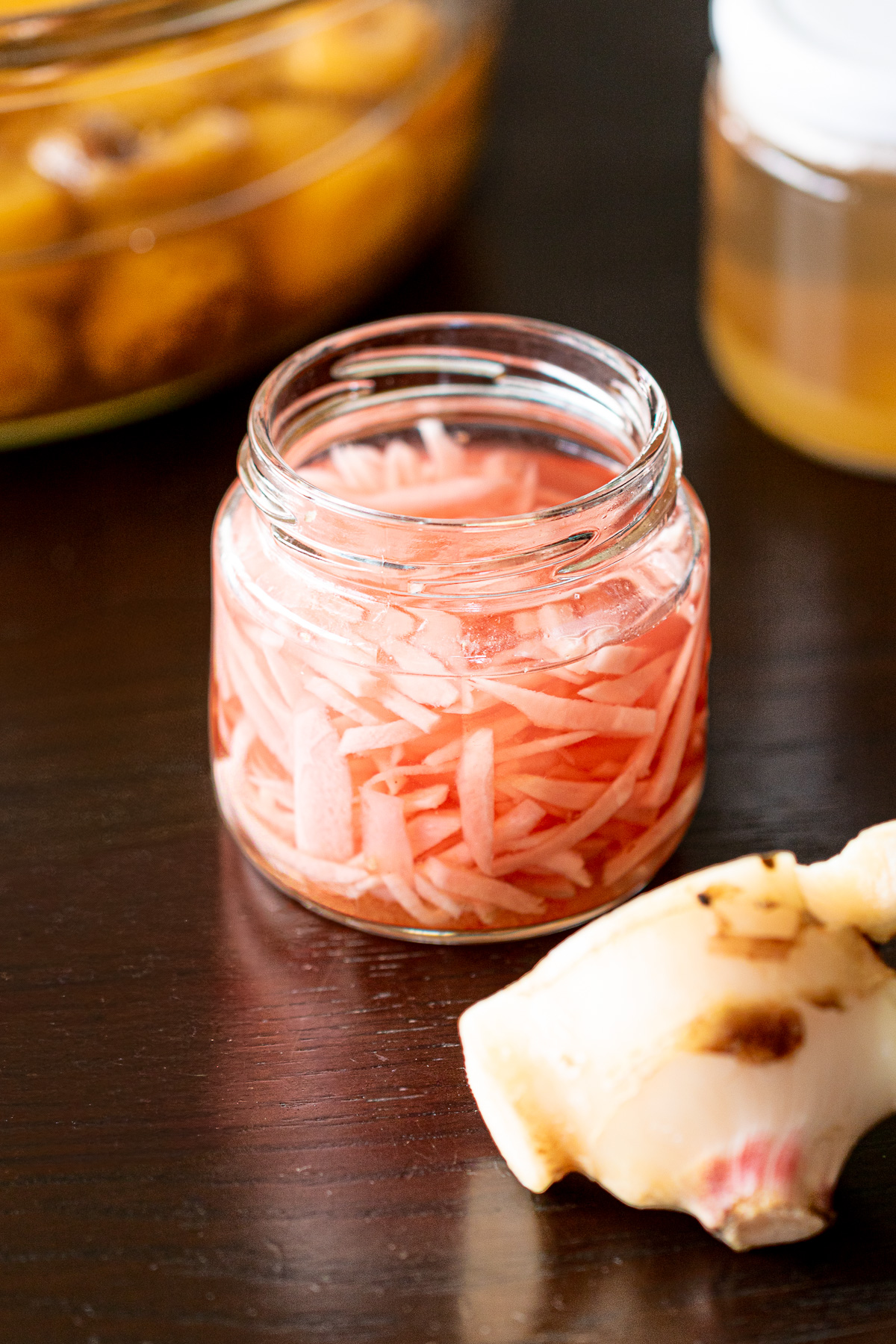
Made with no additives, it’s clean and bright in flavor.
Use your own ume vinegar for a personalized touch.
Chop it finely and mix into rice with homemade yukari (shiso flakes), or serve over chilled vegan ramen.
So many ways to enjoy.
🎐 Journal from the Kitchen
When doyou no ushi no hi (Midsummer Day of the Ox) arrives, it's time to finish the season's ume work—drying salted plums under the sun.
This year, I pickled nearly 500 plums. Naturally, I had plenty of ume vinegar left over.
So I brought home some fresh young ginger, and made this gentle, sugar-free beni shoga.
As the pink hue slowly spreads through the ginger, I feel a quiet joy each time.
The color and scent—so subtle, so alive—remind me of what handmade food truly offers.
Jump to:
🧺 About This Recipe
- Naturally pink from shiro umezu (white ume vinegar/白梅酢)—no artificial colors
- Made without sugar or additives
- Uses the preservative power of ume vinegar—no added chemicals needed
- Easy to make in small batches
- Ready in just a few hours
- Vegan and gluten-free
- Lovely on rice, noodles, or even in salads
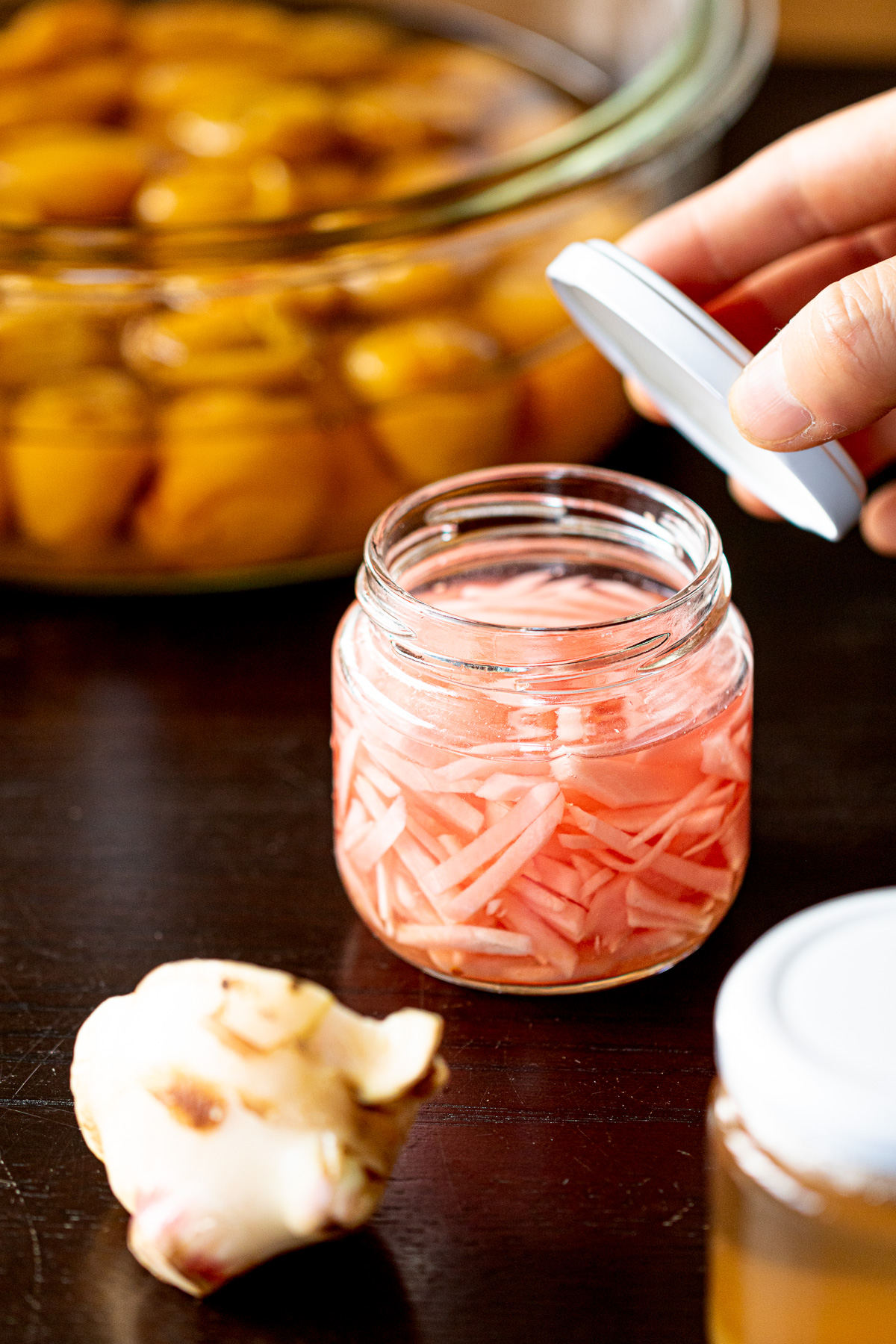
🌿 What Is Ume Vinegar?
Ume vinegar, known as umezu (梅酢) in Japanese, is the flavorful liquid left after pickling ume plums.
It’s naturally tangy, with a mild saltiness and a subtle floral aroma.
Though called “vinegar,” it’s technically a seasoned brine, used traditionally in Japanese cooking to preserve vegetables, enhance sauces, or add a refreshing finish to dishes.
▶︎ Where to Find Ume Vinegar
You can often find it at Asian grocery stores or Japanese markets.
Look for labels that say umezu or “plum vinegar.”
▶︎ Types of Ume Vinegar
- White ume vinegar (shiro umezu): clear, light-colored, and delicate in flavor
- Red ume vinegar (aka umezu): infused with red shiso, adding deeper aroma and a vivid pink hue

🌸 Ingredients & Instructions
▶︎ Ingredients
- Fresh young ginger – as much as you like
- Ume vinegar (white or red) – enough to cover the ginger slices
- Store-bought ume vinegar is fine. Red ume vinegar (with red shiso) gives a deeper color.
👇 You’ll find a printable recipe card at the end.
▶︎ Instructions
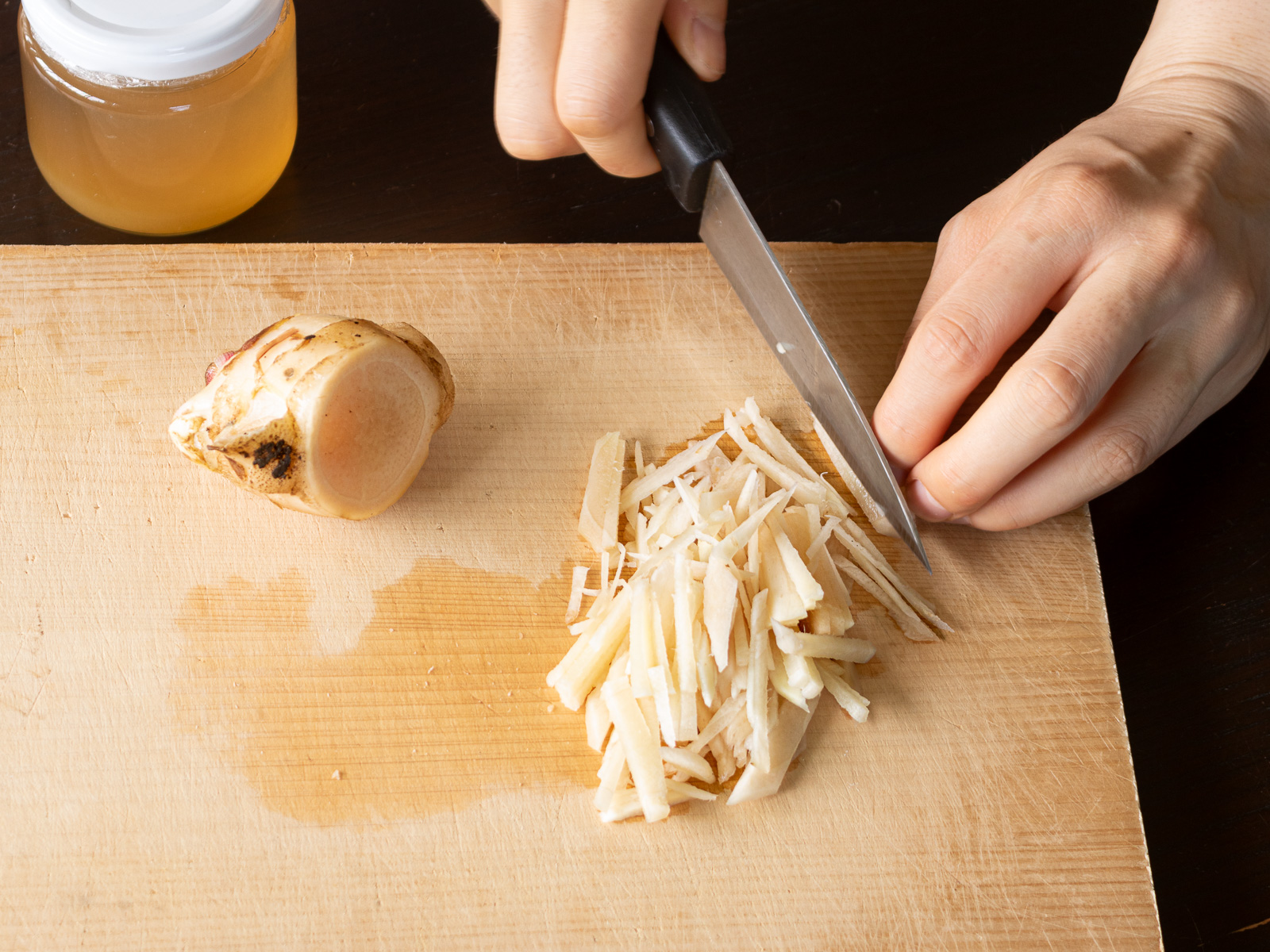
- Slice the ginger:
Wash the ginger thoroughly and gently scrub off any dirt. Pat dry.
Slice thinly—into matchsticks or rounds, as you like.
🕊 I didn’t peel the ginger for this batch. If the skin seems too coarse, gently scrape it with the edge of a spoon.
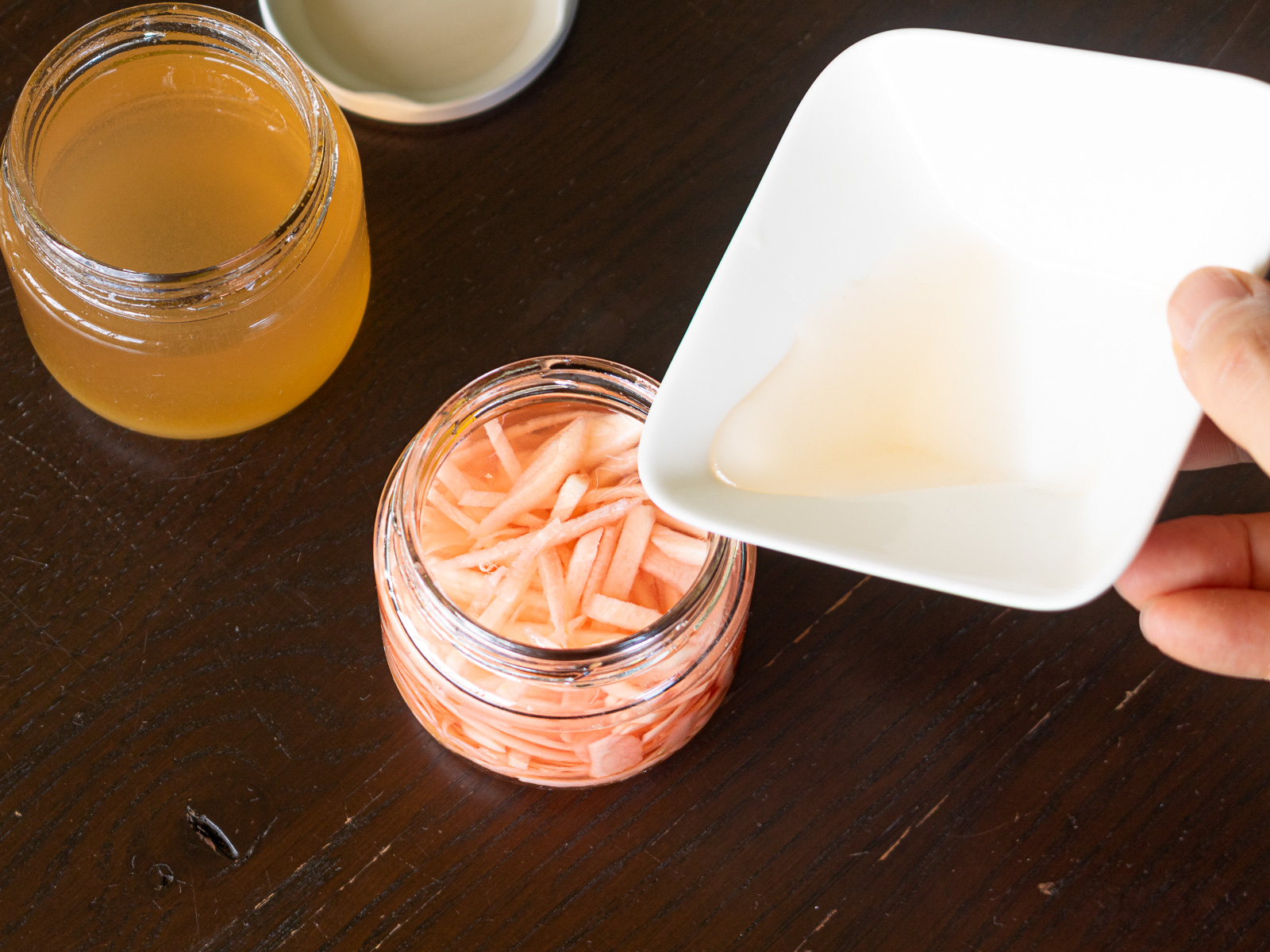
- Pickle it
Place the sliced ginger in a clean jar. Pour ume vinegar over until completely covered.
Let sit in the refrigerator for several hours or overnight.
🕊 Watching the pink slowly bloom is part of the quiet delight.
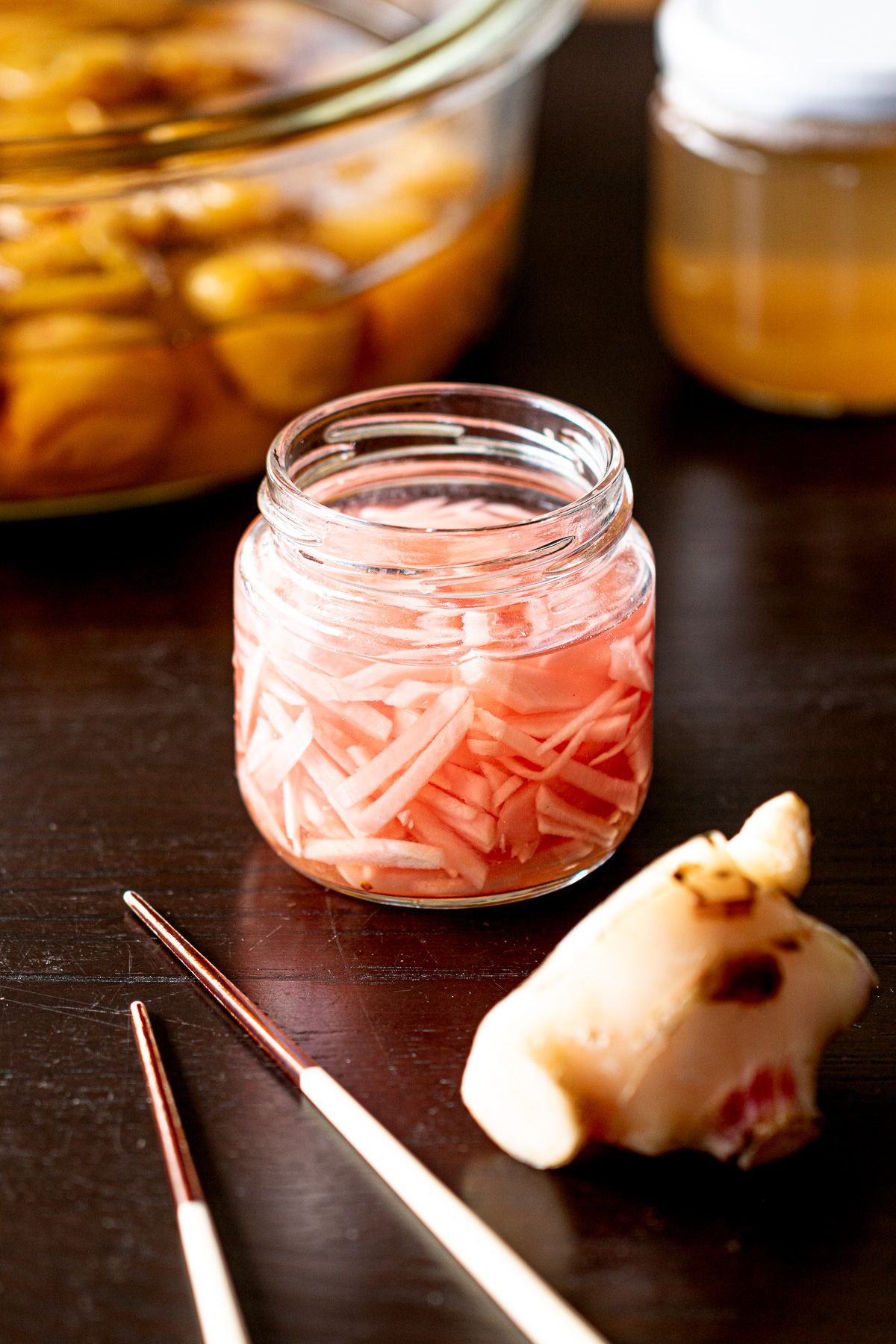
🫙 Storage & Kitchen Notes
▶︎ Storage Tips
- Keeps for 7–10 days in the refrigerator
- Use clean utensils each time to prevent contamination
- Make small batches to enjoy it fresh
▶︎ Choosing Ume Vinegar
- White ume vinegar: soft, mild, and naturally salty
- Red ume vinegar: adds aroma and deeper color
▶︎ On Jar Lids
Avoid metal lids—ume vinegar is quite acidic and may cause corrosion.
Use glass or plastic lids, or line metal ones with parchment paper if needed.
A glass jar with a BPA-free plastic lid is ideal.
🍽 How to Use Beni Shoga
- On top of stir-fried noodles (yaki-soba, yaki-udon) or vegan ramen
- Mixed into rice with yukari (shiso flakes) or toasted sesame
- As a garnish alongside Japanese curry in place of fukujinzuke
- Finely chopped and stirred into summer salads or on cold tofu
- Wrapped inside onigiri for a sharp, refreshing flavor burst
📚 FAQ
Yes. Even white ume vinegar brings out a gentle pink color in young ginger. Red shiso vinegar deepens it.
You can add a small pinch of cane sugar or beet sugar—but it’s optional. The clean, tart flavor is part of its charm.
About 7–10 days in the refrigerator. Use clean utensils to help it stay fresh longer.
Yes, though young ginger is milder, more aromatic, and colors more easily. It's ideal when in season.
👒 Vegan Pickles
More vegan pickling recipes from around the world:
☀️ Enjoy with Vegan Curry
This beni shoga pairs beautifully with a nostalgic Japanese-style yellow curry:
✏️ Recipe Card|Printable
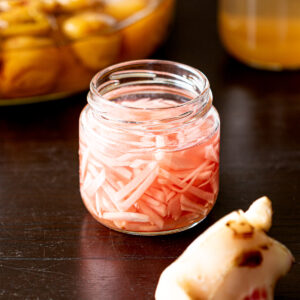
Naturally Pink Beni Shoga|Ginger Pickled in Ume Vinegar
Equipment
- cutting board
- Sharp knife
- Clean glass jar with non-metal or coated lid
- Spoon or peeler optional
Ingredients
- Young ginger (– as much as desired)
- Ume vinegar (white or red – enough to submerge the ginger slices)
- Note: Store-bought ume vinegar is fine. Red ume vinegar with shiso will give a deeper pink.
Instructions
- Wash and slice the ginger: Rinse the ginger well and wipe off any moisture with a clean towel. Slice thinly to your preferred thickness.*You can leave the skin on or lightly scrape it off with a spoon if desired.Young ginger
- Pickle: Place the sliced ginger in a clean glass jar. Pour ume vinegar over it until fully covered.Ume vinegar
- Refrigerate: Let sit in the refrigerator for a few hours or overnight. Once the ginger turns pale pink, it’s ready to enjoy.
Notes
- Storage: Keeps in the fridge for 7–10 days. Always use clean utensils to avoid contamination.
- Ginger variations: Thin matchsticks for yakisoba, minced for rice or salads.
- Flavor: White ume vinegar (白梅酢) brings mild salinity; red ume vinegar (赤梅酢) adds aroma and color.
- Optional: A touch of raw cane sugar or maple syrup can be added for a mild sweetness, if desired.
- Lid caution: Ume vinegar is quite acidic. Avoid direct contact with metal lids—line with parchment or use non-metallic lids if possible.
💐 Closing Notes
Homemade pickles bring quiet beauty—color and aroma shaped by the seasons.
Whether it’s beni shoga made with ume vinegar or sweet-pickled onions dyed with beets, each one carries a softness that processed foods cannot imitate.
I’ll make a generous batch and enjoy it tomorrow with a nostalgic Japanese curry.
A gentle splash of color on a plate of memories.

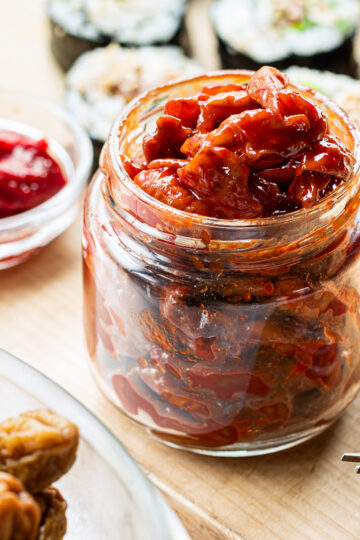
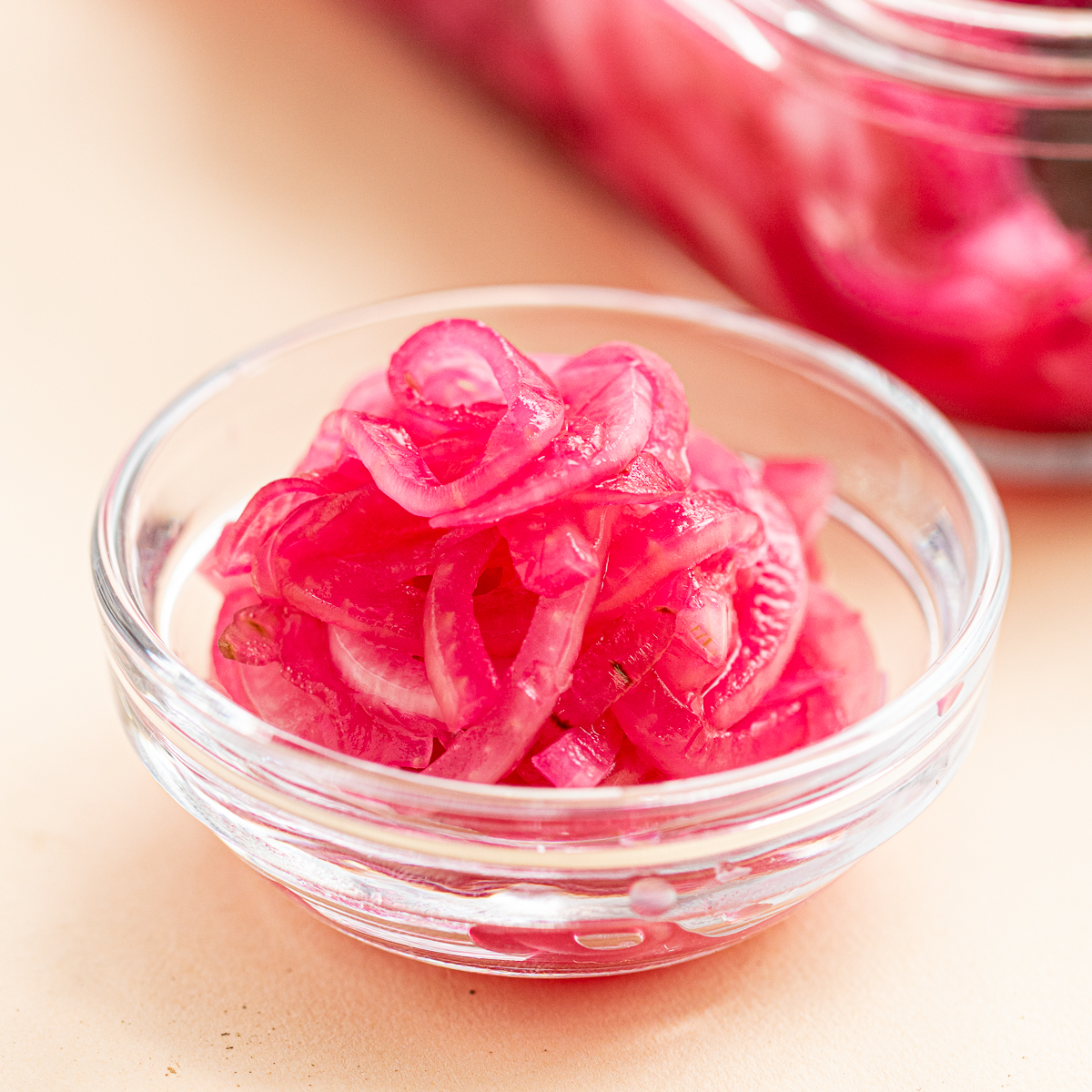
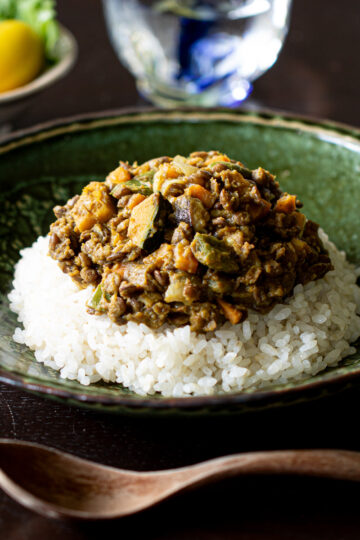
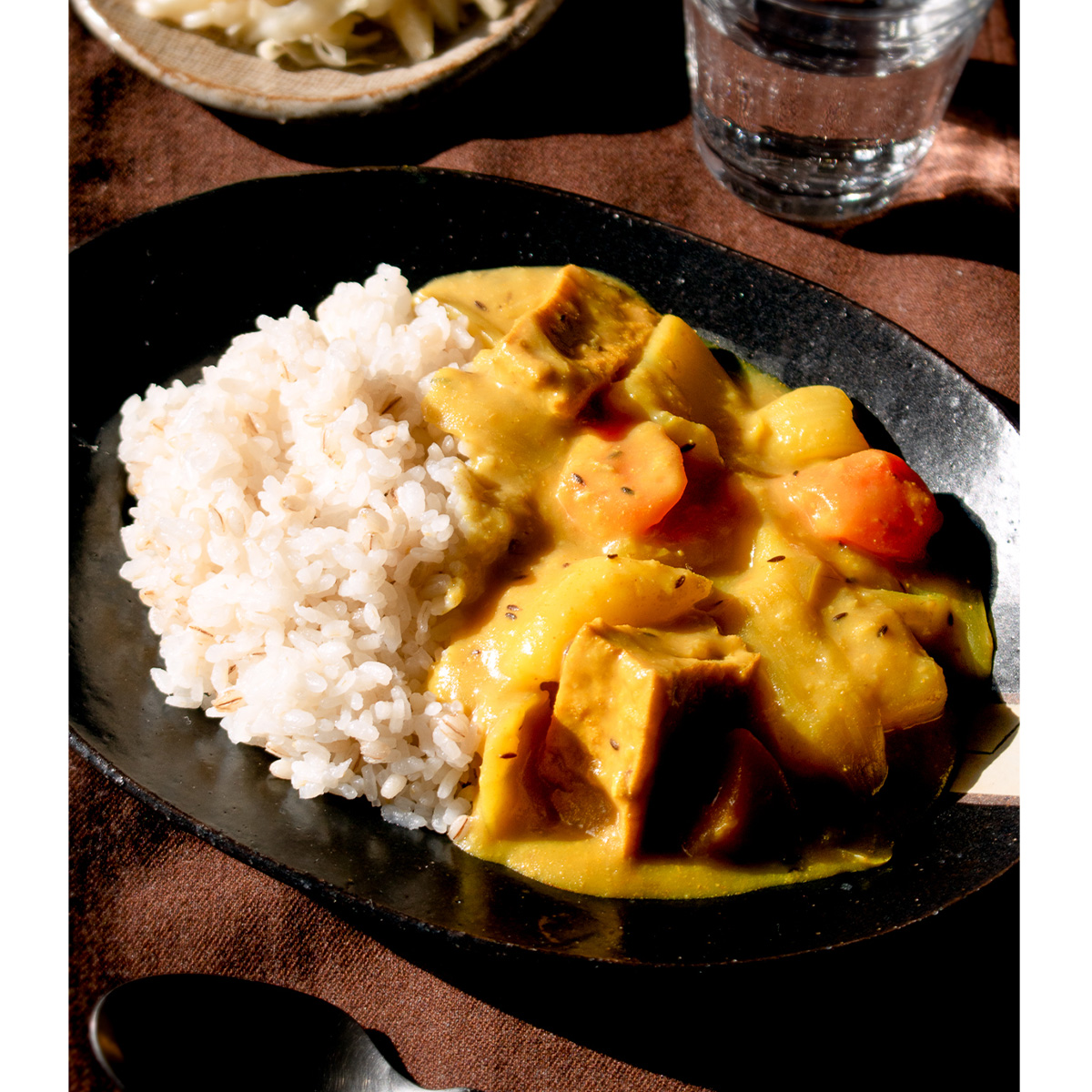

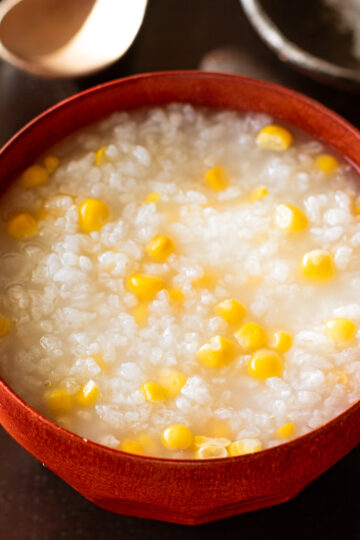
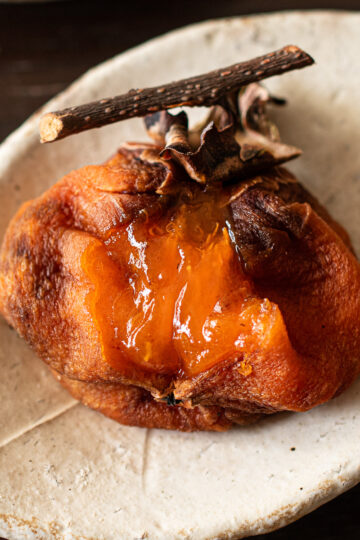
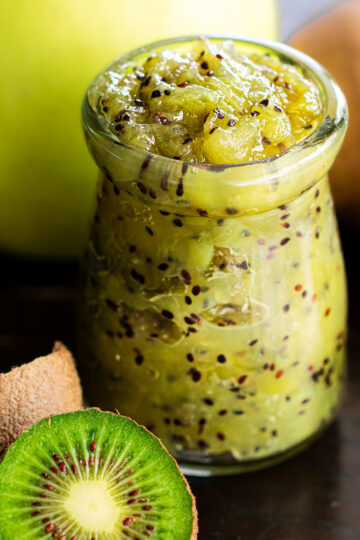
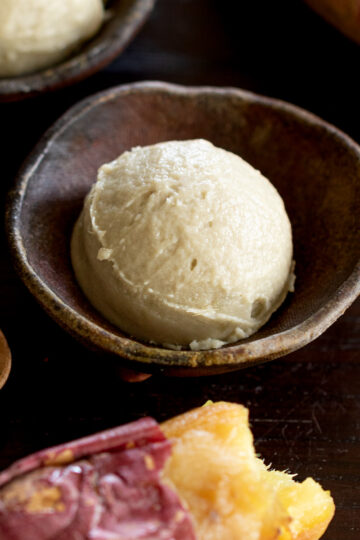
Comments
No Comments